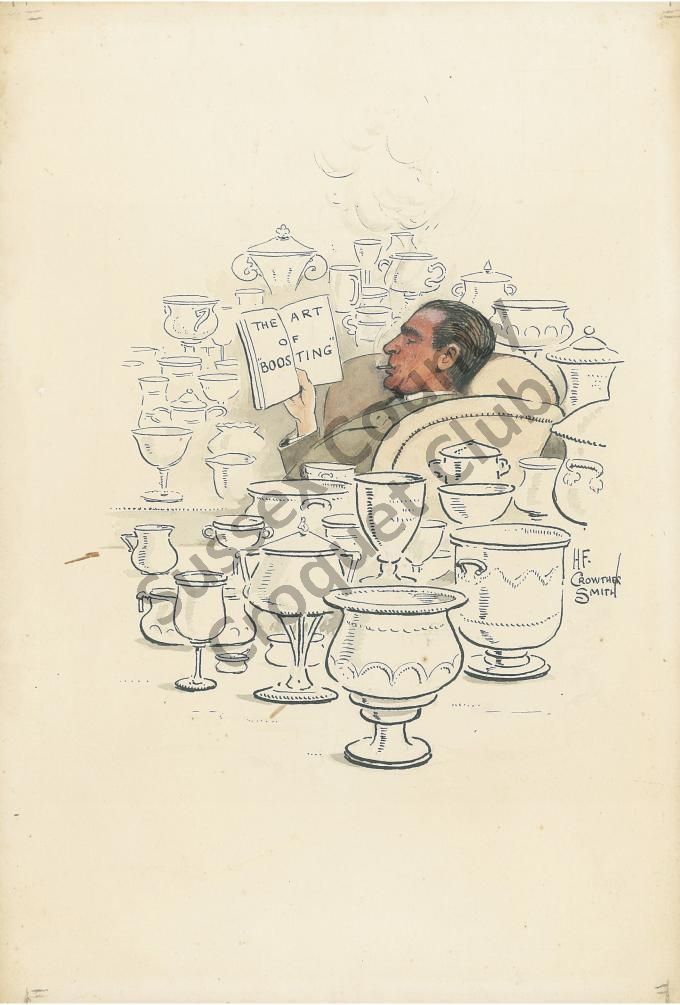Leslie O'Callaghan by Crowther Smith
O: O'Callaghan
It is impossible to explain how the 1912 Open champion makes his many marvellous shots, but boosting means running hoops hard to the boundary
O Callaghan makes many marvellous shots
Which win for him numberless beautiful pots
Leslie O'Callaghan (1880 - 1944) , usually known as CL to distinguish him from his brother won 73% of all games recorded on Croquet Records. Notwithstanding the verse he seems to have had his best season in 1921. Prichard1 has photographs on pages 73-4 in the chapter in which he discusses the Irish Terrors, Corbally, O'Callaghan & Duff Matthews, and:
Close on the heels of Corbally came C.L. O'Callaghan, who led a seasonal life. The winter he spent in Ireland hunting with a variety of packs [and] in 1904 he took on the mastership of the Fingal Harriers. He rode with considerable success in point-to-points and steeplechases on his own horses and those of his friends. The summer he devoted to croquet. ... Whereas Corbally tempered ebullience with discretion, C.L. was unpredictable. He had the manner of a stage Irishman; once at Roehampton, when his opponent had committed an infringement, the question arose of whether the ball should be replaced or not, whereupon C.L. exclaimed in his Irish brogue, 'If it's got to be moved, it must stay where it is.' There was a peculiar magnetism about his play that invariably drew a large audience. Corbally and C.L. overlapped, but the latter was at his peak when Corbally was on the wane. Between 1901 and 1921 C.L. won the Champion Cup and the Open Championship three times each, the Gold Medal four times and the Gold Cup at Devonshire Park five times." Then quite suddenly in 1922, at the age of forty-two, his zest for croquet deserted him. He took to golf and never played croquet again, though sometimes as a rare spectator after a round of golf at Roehampton hinting that he might do so again one day.
| Robertson board 183 x 268 mm with an irregular 5 cm strip on the R, and signs of attachment or covering removed from the top. A pencil name and number is probably a telephone number, or similar, unconnected with the subject. The image is cleaner than most but marked on the edge top, R and bottom. There is one filled pin (or other ) hole about 10mm from the middle of the Left edge. There are, possibly pencil, marks in the corners suggesting framing activity. |


1The History of Croquet, Col D M C Prichard, London, 1981
